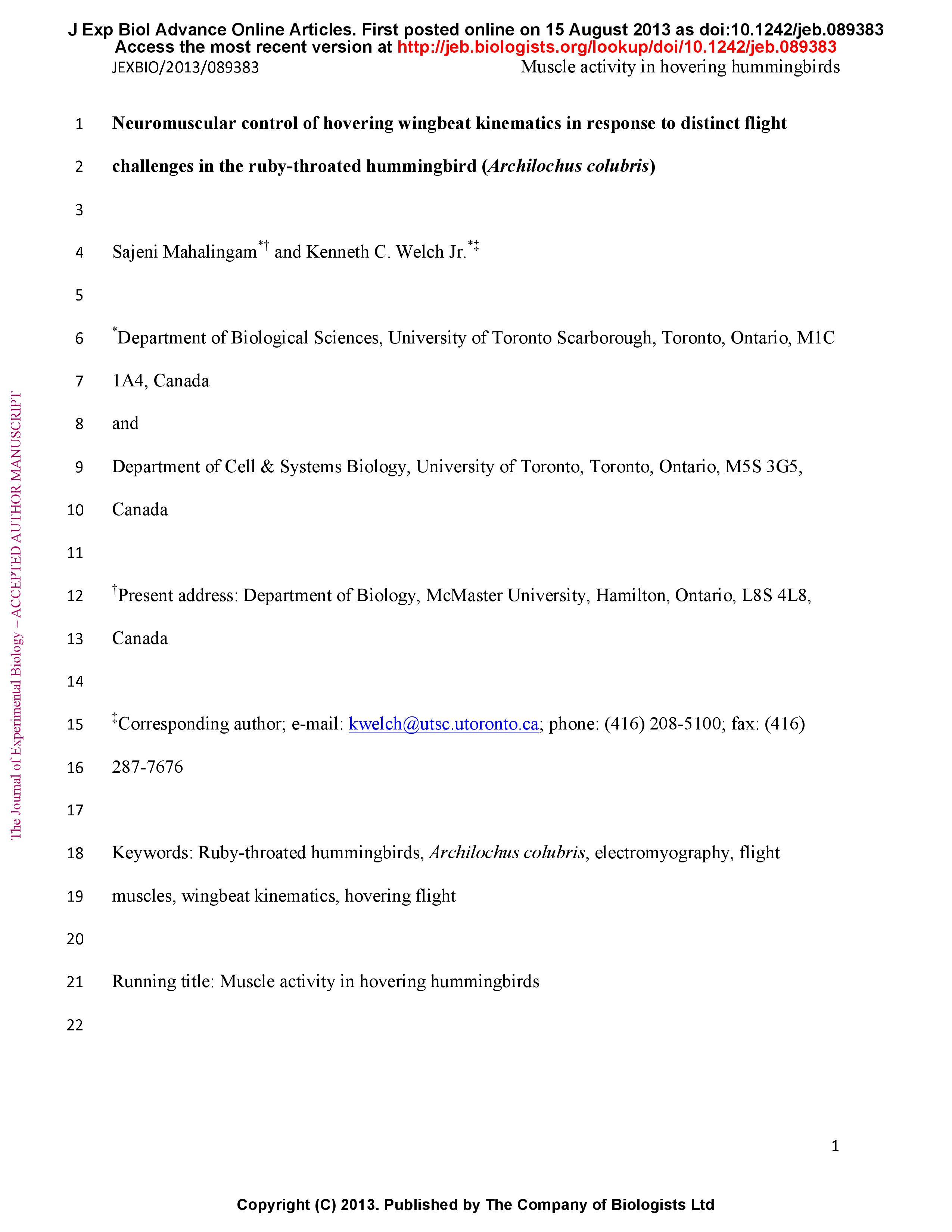Summary
While producing one of the highest sustained mass-specific power outputs of any vertebrate, hovering hummingbirds must also precisely modulate the activity of their primary flight muscles to vary wingbeat kinematics and modulate lift production. While recent studies have begun to explore how pectoralis (the primary downstroke muscle) neuromuscular activation and wingbeat kinematics are linked in hummingbirds, it is unclear if different species modulate these features in similar ways, or consistently in response to distinct flight challenges. In addition, little is known about how the antagonist, the supracoracoideus, is modulated to power the symmetrical hovering upstroke. We obtained simultaneous recordings of wingbeat kinematics and electromyograms (EMGs) from the pectoralis and supracoracoideus in ruby-throated hummingbirds (Archilochus colubris) while hovering under the following conditions 1) ambient air 2) air density reduction trials 3) submaximal load lifting trials and 4) maximal load lifting trials. Increased power output was achieved through increased stroke amplitude during both treatments, but wingbeat frequency only increased at low air densities. Overall, relative EMG intensity was the best predictor of stroke amplitude and is correlated with angular velocity of the wingtip. The relationship between muscle activation intensity and kinematics was independent of treatment type, indicating reduced drag on the wings in hypodense air did not lead to high wingtip angular velocities independently of increased muscle work. EMG bursts consistently began and ended before muscle shortening under all conditions. During all sustained hovering spike number per burst consistently averaged 1.2 in the pectoralis and 2.0 in the supracoracoideus. The number of spikes increased to 2.5-3 in both muscles during maximal load lifting trials. Despite the relative kinematic symmetry of the hovering downstroke and upstroke, the supracoracoideus was activated ~1 ms earlier, EMG bursts were longer (~0.9 ms), and exhibited 1.6 times as many spikes per burst. We hypothesize that earlier and more sustained activation of the supracoracoideus fibers is necessary to offset greater compliance resulting from the presence of the supracoracoid tendon.








